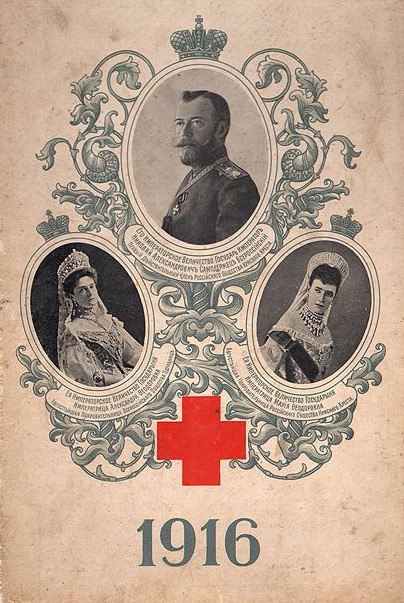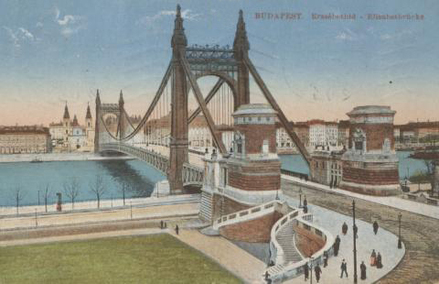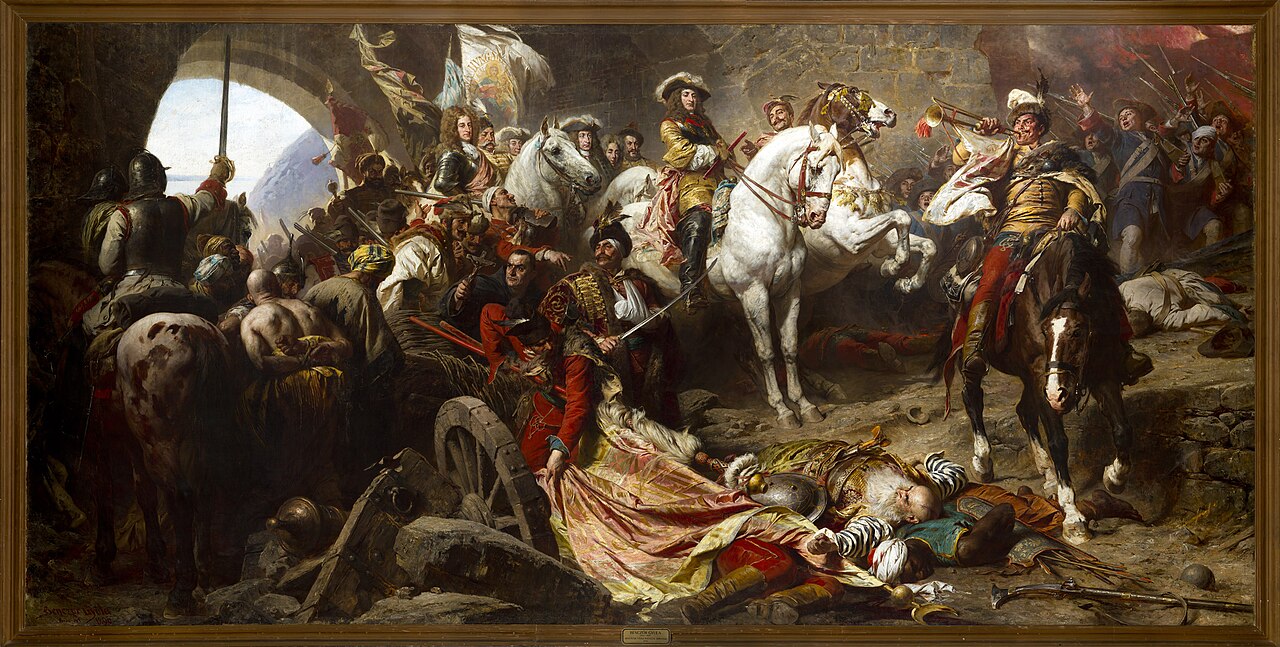Featured image / A hónap képe
I
was thinking about introducing a “This month’s featured image” section for a
while, and now here it is! The image will be shown on the right, and this
article is dedicated to introduce them, or sometimes to tell about them a
little more.
2015/12
– 2016/1
In
light of the Christmas holidays, as well as my recent writing about The
Sound of Music, the very first featured image is a promotional photo of the
“von Trapp family”. Merry Christmas! Credit goes to Mindnight Mindquake.
2016/2
Patrona
Hungariae –
a magyarok Nagyasszonya, that is, Madonna as the Queen of Hungary with the Holy
Crown on her head. Our first king, Saint Stephen I offered his kingdom to the
Virgin Mary and asked for her help and protection. Since then, Madonna is
regarded as the Queen of Hungary, while Hungary itself is the Regnum
Marianum – the “Kingdom of Mary”. (An interesting thing: when speaking
about this, we almost always use the Latin term, so we rarely say “Mária
királysága/országa”, which would be the Hungarian equivalent of Regnum
Marianum.) Source:
http://marianosztrakegyhely.hu/system/files/images/szuzanya.jpg
2016/3
Ballrom in the Royal Castle of Buda,
1926. The Royal Palace of Hungary is one of the most beautiful royal palaces of
the world – not only because it is located on the “Castle Hill”, looking down
on the Danube and the whole city, but also because the building itself is a
fairy tale-like palace. Sadly, both the exterior and the interior were
seriously damaged in the Second World War, and the communist regime did not
renovated them to their original state. The exterior was “simplified”, while the
interior was completely destroyed and reconstructed in order to house the Hungarian
National Gallery and the Széchényi Library. Source: Fortepan.
Cover page of a Russian calendar from 1916. The months were dedicated to members of the Imperial Family who took part in the work of the Red Cross and cared for wounded soldiers. March was Grand Duchess Olga Nikolaevna’s month, while April featured Grand Duchess Tatiana Nikolaevna. Source: imperial russia.tumblr
In Hungary, mother’s day falls on the first Sunday in May – in 2016, it is 1 May, which happens to be Labour Day too. The photo, taken in 1903, depicts the last Empress of Germany and Queen of Prussia, Victoria Augusta, wife of Kaiser Wilhelm II, with her daughter, Princess Victoria Louise. Being the Kaiserpaar’s only daughter, the Princess had a special place in both her father’s and mother’s heart, as well as in the heart of German people. She is holding a portrait of the Kaiser. Source: akpool.de
Mosaic portrait of Saint Irene in the Haiga Sophia. She was born as Princess Piroska (her name literally means “little red” in Hungarian) of Hungary, the daughter of King Ladislaus I of Hungary. She married to Byzantine Emperor John II Komnenos, thus becoming the Empress of the Byzantine Empire. Despite being a Catholic kingdom, mediaeval Hungary had strong ties with the Byzantine Empire. Source: Wikimedia Commons
Official poster of the “My history. The Romanovs” (Моя история. Романовы) exhibition. Every time I look at this picture I cannot help and think that “they look like if they’re going to drop the coolest music album of the year”. Source: expohistory.ru
The old, original Erzsébet bridge in Budapest. It was the pair of today’s Szabadság bridge, which was called Ferenc József bridge (Franz Joseph) back then. However, the Erzsébet bridge was destroyed in the Second Wrold War, and the communist regime did not restore it, but rather built a totally new (and ugly) bridge instead. And the Ferenc József birdge was renamed. Soruce: gyertagyujtas.hu
This year saw the 330th anniversary of the siege of Buda in 1686, an important milestone in the war for Hungary against the Ottoman Empire. Hungary was occupied by the Turkish forces back in the 16th century, and was under an Ottoman controll for about 150 years. The Holy Leauge finally took Buda after a 78-days siege. Source: Wikimedia Commons
Another anniversary in 2016: it was exactly 60 years ago that on 23 October 1956 a revolution broke out in Budapest (and, later, in many towns around the whole country) against the Communist regime. The symbol of the revolution of 1956 was the Hungarian flag with a hole in the middle – the Socialist coat of arms was cut out of the flag. The above photo depicts the moment when the Socialist coat of arms is being thrown away from the Liberty bridge (formerly the Ferenc József bridge). Source: Wikimedia Commons
Franz Joseph I, Apostolic King of Hungary. Source: Wikimedia Commons
Our King and Queen. My favourite photo from the 1916 coronation session, showing King Károly IV and Queen Zita. The last anniversary in 2016 is the centenary of the last coronation in Hungary. Despite being in the middle of the First World War, King Károly IV was crowned as the Apostolic King of Hungary in a grand ceremony on 30 December.
The four children of the last Qajar Shah of Persia (Iran). Ahmad, the last shah from the Qajar dynasty was deposed in 1925, ending the almost 150-year rule of the Qajars. The Persian crown went to the Pahlavi dynasty – the last royal family of Iran. Source: Qajar Pages.
Ozma, Princess of Oz, as illustrated by John R. Neill. Ozma was the rightful ruler of the magical land of Oz, and after the Wizard left the country, she ascended the throne. Despite being so young and having no “real” magical powers like Glenda or the other witches, she was an ideal monarch. Source: Hungry Tiger Talk.
A beautiful painting by František Kupka, a Czech painter; dated 1902. Source: ArtNews.hu
Easter is coming – a gorgeous jewellery egg made by Fabergé who was working for the Russian Imperial Court. This pink egg, adorned by snowdrops, contains three miniature portraits of Tsar Nicholas II and his two eldest daughters, Grand Duchesses Olga and Tatiana Nikolaevna. Source: etsy.com
The daughters of Tsar Nicholas II having a drawing lesson in Livadia, in the spring of 1914. The photograph, originally a black and white one, was coloured by one of the grand duchesses. Source: vk.com
2016/4
Cover page of a Russian calendar from 1916. The months were dedicated to members of the Imperial Family who took part in the work of the Red Cross and cared for wounded soldiers. March was Grand Duchess Olga Nikolaevna’s month, while April featured Grand Duchess Tatiana Nikolaevna. Source: imperial russia.tumblr
2016/5
In Hungary, mother’s day falls on the first Sunday in May – in 2016, it is 1 May, which happens to be Labour Day too. The photo, taken in 1903, depicts the last Empress of Germany and Queen of Prussia, Victoria Augusta, wife of Kaiser Wilhelm II, with her daughter, Princess Victoria Louise. Being the Kaiserpaar’s only daughter, the Princess had a special place in both her father’s and mother’s heart, as well as in the heart of German people. She is holding a portrait of the Kaiser. Source: akpool.de
2016/6
Mosaic portrait of Saint Irene in the Haiga Sophia. She was born as Princess Piroska (her name literally means “little red” in Hungarian) of Hungary, the daughter of King Ladislaus I of Hungary. She married to Byzantine Emperor John II Komnenos, thus becoming the Empress of the Byzantine Empire. Despite being a Catholic kingdom, mediaeval Hungary had strong ties with the Byzantine Empire. Source: Wikimedia Commons
2016/7
Official poster of the “My history. The Romanovs” (Моя история. Романовы) exhibition. Every time I look at this picture I cannot help and think that “they look like if they’re going to drop the coolest music album of the year”. Source: expohistory.ru
2016/8
The old, original Erzsébet bridge in Budapest. It was the pair of today’s Szabadság bridge, which was called Ferenc József bridge (Franz Joseph) back then. However, the Erzsébet bridge was destroyed in the Second Wrold War, and the communist regime did not restore it, but rather built a totally new (and ugly) bridge instead. And the Ferenc József birdge was renamed. Soruce: gyertagyujtas.hu
2016/9
This year saw the 330th anniversary of the siege of Buda in 1686, an important milestone in the war for Hungary against the Ottoman Empire. Hungary was occupied by the Turkish forces back in the 16th century, and was under an Ottoman controll for about 150 years. The Holy Leauge finally took Buda after a 78-days siege. Source: Wikimedia Commons
2016/10
Another anniversary in 2016: it was exactly 60 years ago that on 23 October 1956 a revolution broke out in Budapest (and, later, in many towns around the whole country) against the Communist regime. The symbol of the revolution of 1956 was the Hungarian flag with a hole in the middle – the Socialist coat of arms was cut out of the flag. The above photo depicts the moment when the Socialist coat of arms is being thrown away from the Liberty bridge (formerly the Ferenc József bridge). Source: Wikimedia Commons
2016/11
Franz Joseph I, Apostolic King of Hungary. Source: Wikimedia Commons
2016/12
Our King and Queen. My favourite photo from the 1916 coronation session, showing King Károly IV and Queen Zita. The last anniversary in 2016 is the centenary of the last coronation in Hungary. Despite being in the middle of the First World War, King Károly IV was crowned as the Apostolic King of Hungary in a grand ceremony on 30 December.
2017/1
The four children of the last Qajar Shah of Persia (Iran). Ahmad, the last shah from the Qajar dynasty was deposed in 1925, ending the almost 150-year rule of the Qajars. The Persian crown went to the Pahlavi dynasty – the last royal family of Iran. Source: Qajar Pages.
2017/2
Ozma, Princess of Oz, as illustrated by John R. Neill. Ozma was the rightful ruler of the magical land of Oz, and after the Wizard left the country, she ascended the throne. Despite being so young and having no “real” magical powers like Glenda or the other witches, she was an ideal monarch. Source: Hungry Tiger Talk.
2017/3
A beautiful painting by František Kupka, a Czech painter; dated 1902. Source: ArtNews.hu
2017/4
Easter is coming – a gorgeous jewellery egg made by Fabergé who was working for the Russian Imperial Court. This pink egg, adorned by snowdrops, contains three miniature portraits of Tsar Nicholas II and his two eldest daughters, Grand Duchesses Olga and Tatiana Nikolaevna. Source: etsy.com
2017/5
The daughters of Tsar Nicholas II having a drawing lesson in Livadia, in the spring of 1914. The photograph, originally a black and white one, was coloured by one of the grand duchesses. Source: vk.com

















Comments
Post a Comment